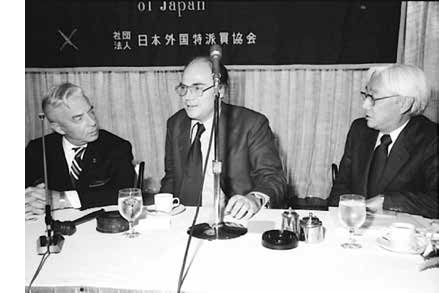Issue:
CLIMATE CHANGE AND JAPAN
403.28
Parts per million of global CO2, highest in 650,000 years
14/16
warmest years on the planet have occurred since 2000
287.0
Gigatonnes of land ice lost per year
10
Number of meters glaciers have thinned since 1980
861
Square kilometers of Japan’s coastal lowlands below the mean high-water level
4.1 million
Number of people at risk if sea levels rise by 1 meter
¥17,000, 000, 000
Cost of climate change to Japan in yen per year by 2100 if nothing changes
2.1-4.0°C
Projected temperature increase over next 100 years in Japan (global projection 1.8-3.4)
2-3°C
Temperature rise in large Japanese cities over the 20th century
1.4°C
Increase in global temperature since 1880
1°C
Temperature rise in Japan over the 20th century
5.5
Number of days earlier that cherry blossoms bloom over last 25 years
12-13%
Projected decrease in Japan’s total production of paddy rice by 2050
-17.6%
Deviation from the national average in top quality rice in 2010’s record heat year
70%
Projected decline in catches of coastal fish off Japan by 2100
Nature Publishing Group, NASA, United Nations University, Meteorological Agency, Ministry of the Environment
THE DIGITAL DUO

Noted conductor Herbert von Karajan (left) and Sony Chairman Akio Morita (right) appeared at the FCCJ on Nov. 9, 1981, to extol the virtues of a new digital format for music, the compact disc (CD). Seated between them, and no doubt raising a question, is Club Treasurer Karel van Wolferen (NRC Handelsblad), standing in as moderator for FCCJ President Edwin Reingold (Time) who was on a trip to China. Karel was selected to wield the gavel due to his knowledge of classical music.
Herbert von Karajan made a huge number of recordings, estimated at some 200,000. An Austrian, he led the Berlin Philharmonic for 35 years from the mid-1950s and became the pre-eminent figure in European classical music until his death in 1989. He was recruited by Philips as an “ambassador” for CD records in 1979 and the first test pressing of the new format was made from his music.
Akio Morita, who co-founded Sony with Masaru Ibuka, a former Imperial Navy colleague, had overseen the development of tape recorders, transistor radios, transistor TVs and the Walkman as well as collaborating in the development of the compact disc. His follow-up to that was the Discman. Akio Morita gave up his position in Sony in 1994 following a cerebral hemorrhage while playing tennis. He died in 1999.
Coincidentally, Karel’s fellow Dutchmen at Philips in Amsterdam had supplied the basic technology, developed from their earlier LaserDisc, as part of a collaborative team formed in 1979 to develop this new digital audio technology. The other members of the team came from Sony, known for its innovative audio products, who contributed error correction and stability technology. Both had independently worked on CD technology in the last half of the 1970s, but wisely decided to combine their efforts.
Sales of audio compact discs overtook those of vinyl records in 1988 and cassettes in 1991. CD sales dominated until 2015, when they lost out to an even more compact digital music format in the form of the MP3 that had begun to spread on the internet in the late 1990s. File-sharing, followed by the launch of the portable iPod in 2001, began the slow death CDs. By 2012, CDs and DVDs comprised only one-third of music sales in the U.S., although strong sales in Japan continued until 2015.

